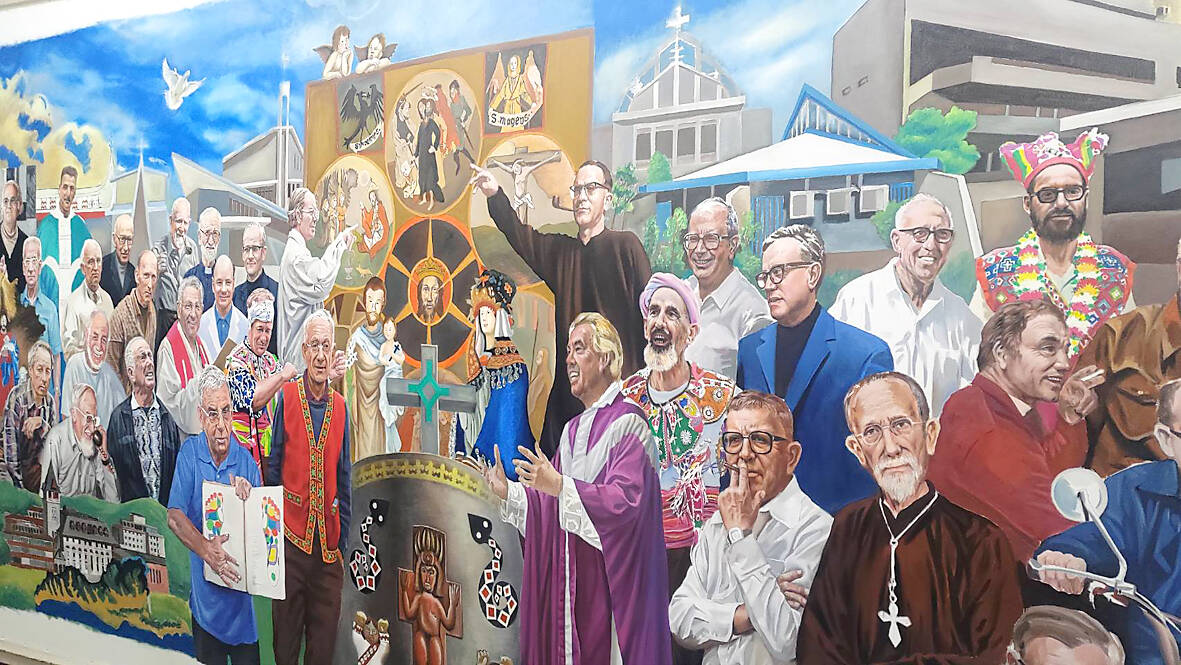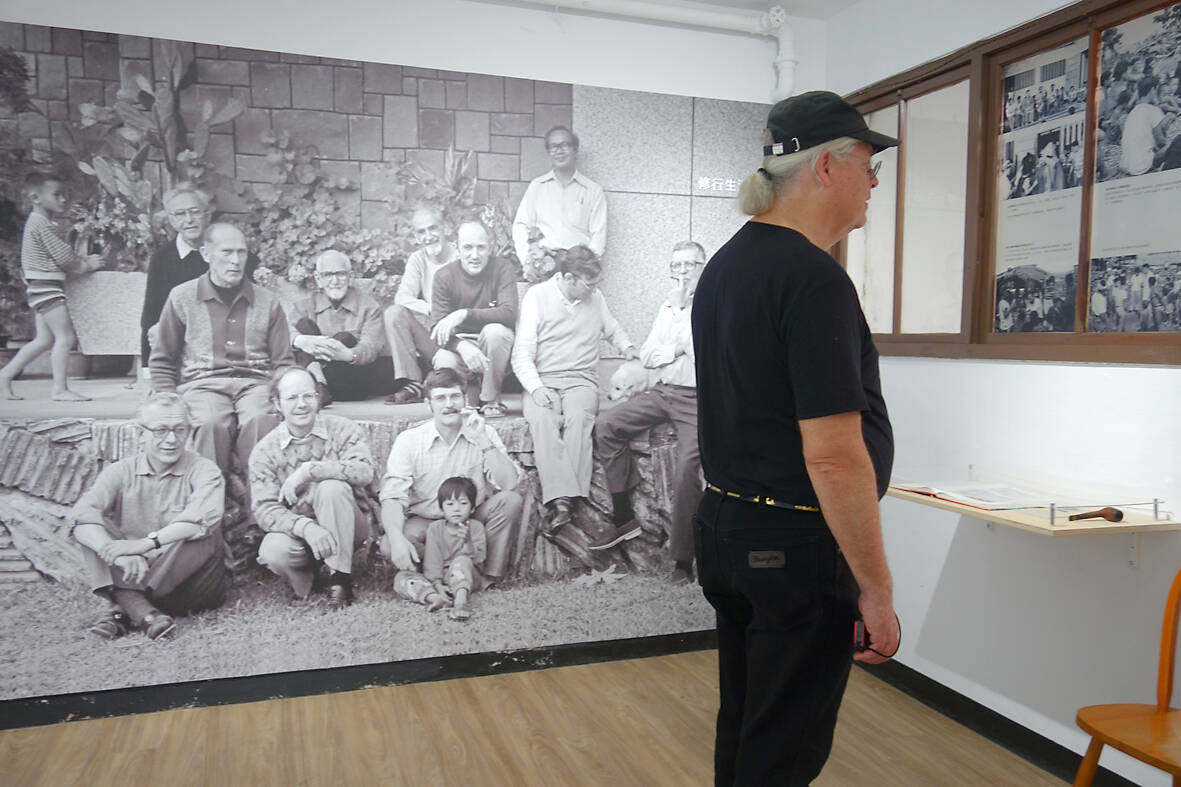Founded in 2016, the Bethlehem Mission Society Friendship Circle connects friends, organizes community events and promotes the Bethlehem Mission Society, a Catholic organization. The Friendship Circle will commemorate over 70 years of Mission Society activity in Taiwan this month with an art exhibition beginning tomorrow. A 33 artist residency at the Bethlehem Mission Society House, which is located on Hangchou Street (杭州街) in the middle of Taitung, will also be open for public viewing.
“Works expressing the clergy’s devotion,” will be on display, according to a press-release, including artwork by artists of the Puyuma indigenous community. There will be sculpture, illustrations and big canvas paintings created by people “from a diverse background” that are united by a “mutual theme” — that is, “to record and pass on the touching stories of the Bethlehem Mission Society.”
The Bethlehem Mission Society (Societas Missionum Exterarum de Bethlehem in Helvetia or SMB), is a Catholic religious order that was founded in Immensee, Switzerland in 1895. Originally headquartered in Northeast China, the Mission Society relocated to Taiwan in 1953.

Photo courtesy of Bethlehem Mission Society
After establishing its headquarters in Taitung County, the mission helped found St. Mary’s Hospital as well as several local nursing homes, among them, St. Joseph’s Kung-Tung Technical Senior High School (私立公東高級工業職業學校) which was founded by the Taiwan mission’s founder, Father Jakob Hilber, in 1960.
In addition to missionary work, SMB priests and volunteers have, over subsequent decades, built more schools and hospitals, as well as professional training centers and kindergartens, often in remote, mountainous areas populated by aboriginal people.
Art and creativity has long be practiced and promoted by the clergy who are said to decorate their chapels and houses with art pieces made from “recycled and found materials” which has “deeply inspired” local artists.

Photo courtesy of Bethlehem Mission Society
■ Bethlehem Love Art Exhibition, Taitung County Arts Center (台東縣藝文中心), 25, Nanjing Road, Taitung City (台東市南京路25號); open house 34 Hangjhou Street, Taitung City (台東縣台東市杭州街34號)
■ Until April 16, open Tuesday through Sunday from 9am to 5pm

Oct. 27 to Nov. 2 Over a breakfast of soymilk and fried dough costing less than NT$400, seven officials and engineers agreed on a NT$400 million plan — unaware that it would mark the beginning of Taiwan’s semiconductor empire. It was a cold February morning in 1974. Gathered at the unassuming shop were Economics minister Sun Yun-hsuan (孫運璿), director-general of Transportation and Communications Kao Yu-shu (高玉樹), Industrial Technology Research Institute (ITRI) president Wang Chao-chen (王兆振), Telecommunications Laboratories director Kang Pao-huang (康寶煌), Executive Yuan secretary-general Fei Hua (費驊), director-general of Telecommunications Fang Hsien-chi (方賢齊) and Radio Corporation of America (RCA) Laboratories director Pan

The classic warmth of a good old-fashioned izakaya beckons you in, all cozy nooks and dark wood finishes, as tables order a third round and waiters sling tapas-sized bites and assorted — sometimes unidentifiable — skewered meats. But there’s a romantic hush about this Ximending (西門町) hotspot, with cocktails savored, plating elegant and never rushed and daters and diners lit by candlelight and chandelier. Each chair is mismatched and the assorted tables appear to be the fanciest picks from a nearby flea market. A naked sewing mannequin stands in a dimly lit corner, adorned with antique mirrors and draped foliage
The consensus on the Chinese Nationalist Party (KMT) chair race is that Cheng Li-wun (鄭麗文) ran a populist, ideological back-to-basics campaign and soundly defeated former Taipei mayor Hau Lung-bin (郝龍斌), the candidate backed by the big institutional players. Cheng tapped into a wave of popular enthusiasm within the KMT, while the institutional players’ get-out-the-vote abilities fell flat, suggesting their power has weakened significantly. Yet, a closer look at the race paints a more complicated picture, raising questions about some analysts’ conclusions, including my own. TURNOUT Here is a surprising statistic: Turnout was 130,678, or 39.46 percent of the 331,145 eligible party

The election of Cheng Li-wun (鄭麗文) as chair of the Chinese Nationalist Party (KMT) marked a triumphant return of pride in the “Chinese” in the party name. Cheng wants Taiwanese to be proud to call themselves Chinese again. The unambiguous winner was a return to the KMT ideology that formed in the early 2000s under then chairman Lien Chan (連戰) and president Ma Ying-jeou (馬英九) put into practice as far as he could, until ultimately thwarted by hundreds of thousands of protestors thronging the streets in what became known as the Sunflower movement in 2014. Cheng is an unambiguous Chinese ethnonationalist,